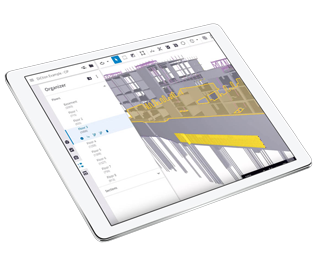Bringing BIM Into the Future of Project Management

Many construction companies intend to utilize business information modeling or BIM in the construction phase, but to what extent is it really happening? According to a 2019 study, 49 percent of companies said they use BIM for visualization, but only 32 percent use it for take-offs — and only 11 percent for code compliance.
While they are common in design, 3D models become trickier to use once the construction project begins. More and more contractors have access to the design models, but the data they provide is limited and getting adoption in the field is a challenge. Contractors may find 3D models more difficult to read than the drawings they’re used to. And to run a project successfully, they must pull data not just from BIM but from other systems and make that information readily available to field teams. The process of unifying disparate information is complicated and discouraging — and BIM becomes just another data silo.
Today, if a construction company wants to use BIM beyond the design phase, it’s possible — but it’s a complicated endeavor. Current real-life applications of BIM fall short of realizing its full potential.
BIM Emerges as a Valuable Tool
For more than two decades, BIM has held out great promise for the construction industry. Designers have used it for years to create pre-construction models. General contractors utilize BIM models for clash detection efforts. Overall, however, it’s used sparingly because to make it work, organizations must cobble together solutions and integrate data from third-party vendors.
Today, if a construction company wants to use BIM beyond the design phase, it’s possible—but it’s a complicated endeavor. Current real-life applications of BIM fall short of realizing its full potential. BIM’s value can be realized when it’s extended across an entire project, from planning to project management, as-built sign off and ongoing maintenance.
 Envisioning the Future
Envisioning the Future
To make effective use of BIM throughout a construction project’s lifecycle, 3D models created by designers need to be made accessible — not just to general contractors, but to everyone involved in the project from start to finish. Access should be simple and intuitive, available on both desktop and mobile devices, and part of a unified project management software system rather than an add-on program.
The models themselves become data hubs, rather than simple 3D models for coordination purposes. For example, a project manager can pull up a model on a mobile device, select a group of elements in a certain location and be able to see which subcontractor each one is assigned to. From there, they can manage all related change orders, RFIs, daily reports, punch items, or issues. In this scenario, the 3D model itself has become a collaborative, evolving project. Team members can make updates and adjustments throughout the construction project as decisions are made and new concerns arise.
With the incorporation of augmented reality (AR) and mixed reality (MR) technology, the 3D models can then be overlaid on the physical environment with devices such as the Trimble XR10 to enable detailed design reviews and ongoing maintenance checks.
At Trimble, we’ve created our solutions around a belief in the usefulness of BIM throughout the entire construction project continuum.
Realizing the Potential of BIM
While other companies struggle to connect their BIM solutions with other systems and software elements, Trimble is on the cutting edge of making lifecycle-wide application of BIM a reality. Trimble Connect, which comes with the ProjectSight project management software solution, allows designers, engineers, field and office personnel to reference 3D models directly from project controls processes such as RFIs, issues, and change orders. The 3D model becomes a data hub, connecting input from collaborators with production data from automated tools that collect information about onsite workers, weather, equipment, materials, and other information critical to daily progress reporting.
 We’re further down this road to 3D project controls because we take a different approach and have been building 3D models into our construction management solutions from the beginning.
We’re further down this road to 3D project controls because we take a different approach and have been building 3D models into our construction management solutions from the beginning.
For example, we built ProjectSight from a concept of project controls combined with 2D and 3D designs. Today, ProjectSight connects 3D models with annotations, documents, and attachments — and you don’t have to be a VDC expert to navigate them all.
At Trimble, we’ve created our solutions around a belief in the usefulness of BIM throughout the entire construction project continuum. We provide the field tools to enable bidirectional workflows, allowing data to flow freely from the project site to the designers and managers and back again. BIM isn’t just an add-on. It’s core to what we do, and we’re leading the charge to provide BIM-based project controls within a unified, streamlined system.